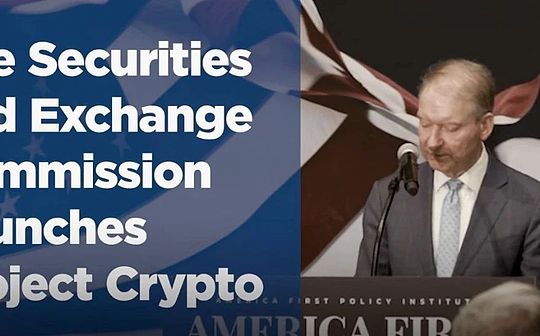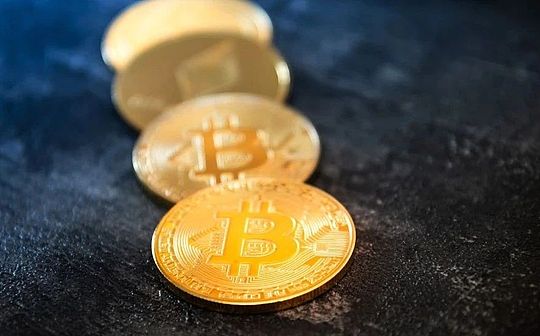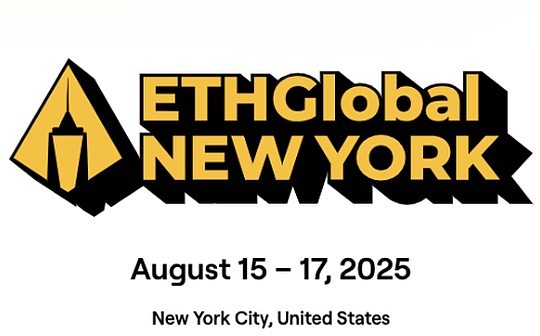
author:Charlie Liu
The two speeches, five days apart, were like the chess game of US crypto finance, one after the other.
On July 31, SEC Chairman Paul S. Atkins announced the “Project Crypto” to write “making the US capital market fully on the chain” on the regulatory agenda.
On August 4, Commissioner Hester M. Peirce faced the reconstruction of financial privacy and regulatory concepts in UC Berkeley’s “Peanut Butter & Watermelon”.
Put the two together and you will find:The United States not only uses “clearer rules” to increase the attractiveness of the capital market, but also uses “a more underlying view of rights” to reshape the attractiveness of talents..
Two speeches
Atkins’ “Project Crypto” is a “market structure-level” transformation declaration.
He talked about the historical context from the Buttonwood agreement of the New York Stock Exchange to the birth of ATS (alternative trading system), and then to the realistic proposition today: to fully bring the issuance, custody and transactions of the United States into the chain.
There are three key points:
First, use clear and simple landable standards to solve the old problem of “is it a securities” and draw a clear track for different types of tokens (digital commodities, stablecoins, securities tokens with distributable income, etc.).
The second is to modernize custody rules, and at the same time, it publicly emphasizes that “self-custody is the core American value” and incorporates on-chain behaviors such as pledge into compliant investment activities.
The third is to propose the regulatory concept of “super-app (super application)” – to handle both securities and non-securities digital assets in a regulated platform to reduce the market efficiency losses caused by segmentation supervision.
The whole speech repeatedly pointed out the topic “relocating outflow business and team back to the United States”, and connected Project Crypto with the Presidential Working Group (PWG) and the latest federal stablecoin legislation.
Peirce’s “Peanut Butter and Watermelon” is a “social contract-level” articleFinancial privacy re-targeting in the digital age.
She started from the third-party doctrine and BSA/AML reporting practices and pointed out a key misunderstanding: moving the large-scale monitoring of the banking system to a point-to-point encrypted network intact.
Since technology is intermediary, the boundaries of rights should also be updated; otherwise, it will create a compliance impulse of “reporting if possible”, which will be higher and may not be better.
She cited a lot of precedents and data to illustrate the re-drawing of the boundaries between privacy and regulation in a digital environment, and opposes the inclusion of ordinary users and developers in the monitoring chain by default.
She does not deny the need to combat crime, but emphasizes that proportionality should be followed, precise law enforcement should be implemented, and the legitimacy of privacy-enhancing technology should be defended.
Portrait of characters
Atkins’s professional background is “market structure engineer”.
He served as a SEC member from 2002–2008 and as non-executive chairman of BATS Global Markets from 2012–2015, before founding and operating Patomak, a compliance and market structure consulting body, until he became the 34th SEC chairman in April 2025.
From his public resume, it can be seen that he attaches importance to key points such as “promoting competition” and “reducing unnecessary overlapping supervision”, which is why “Project Crypto” looks like a design blueprint that aligns exchanges, brokerage, clearing, custody and on-chain settlement.
Peirce’s label is “Crypto Mom”, but more importantly, her “dual perspective” inside and outside the system.
She has been a member of the SEC since 2018. She did research at Mercatus Center in her early years. She has served as a senior legal counsel on the Senate Banking Committee and earlier as a lawyer at the SEC Investment Management Department.and served as legal counsel for Atkins.
This resume makes her familiar with the boundaries between legislation and law enforcement, and can also find a foothold in the technical and rights framework to “update legal principles rather than just update rules”.
Because of these backgrounds and fromTrust that makes her currently designated to lead the SEC’s Crypto Task Force.
Capital and Talent
If the US competitiveness is divided into two curves – capital market attraction and talent attraction – these two speeches happen to pull a curve each and then intersect to form a joint force.
Atkins concretizes the “capital market attractiveness” into: the certainty of token classification, the parallelism of custody and self-custody, the unity of trading venues and cross-category compatibility, and the compliance of on-chain settlement.
These can directly improve the efficiency of “issuance-transaction-clearing-custody” and release the liquidity of US dollar assets on the chain.
Peirce builds “talent attractiveness” on the first principle: financial privacy is the composition of civil rights and should not be “transferred by default” due to technological changes.
Regulation needs to be auditable and accountable, but it cannot be at the expense of universal freedom.
In other words, the former makes the track available, while the latter makes people willing to get on the track.
Comparative Perspective of Regulation in Various Countries
The current international competition is no longer a question of “whether there is supervision”, but whose supervision is more like a “computable and composable” operating system.
Europe’s MiCA first implemented two major stablecoin rules, ART and EMT, in 2024, from white paper obligations, capital and reserves, information disclosure to redemption statutes, and gave a unified caliber, adapted to cross-border “passports”.This system is good at “for licenses to be certain”, but the native interaction of DeFi is still defined by service providers as the core.
The UAE’s dual-track system – Dubai VARA’s “Virtual Assets and Related Activities Regulations” (2023) and Abu Dhabi ADGM’s FRT (Fire Currency Reference Token) framework – is known for its “high transparency + fast iteration” regulatory manual, and it does provide a “list-based license” for exchanges, custody and issuance businesses.Its characteristic is “firstly put out the business assembly line”, and then continue to fine-tune through the updated version guidance.
The Stablecoin Ordinance, which came into effect on August 1, 2025, incorporates the “fiat currency anchored stablecoin issuance” into licensed activities, and is led by the HKMA’s rules and license issuance, which is forming a top-down path of “stablecoin first, and broader token market later”.Its strength lies in a clear legal rank and a clear main supervisor, but the ecosystem’s tolerance for native applications of pure public chains and cross-border coordination still needs to be observed.
Singapore MAS finalized the stablecoin framework in 2023, proposing “100% high-quality reserves, redemption within five working days, independent audit and capital constraints, and compliance markings”.In the revision of the Fund Settlement Law in 2023, Japan positioned the “Japanese yen-denominated stablecoin” as a “money-denominated asset” and limited the issuance of “banks, trusts, and capital transfer operators”.South Korea’s draft “Basic Law on Digital Assets” emphasizes “bankruptcy quarantine”, reserve custody and audit.
Their commonality isUsing the payment stablecoin as the incision, first make money programmable, and then connect securities and physical assets to tokenize.
The American “first principle” narrative has two layers.
The first layer is the “money” level: the GENIUS Act signed by Trump on July 18 established a “federal root” for payment stablecoins, requiring 1:1 high liquidity reserves, regular disclosure, and designed a “super priority” holder protection clause for bankruptcy; from payment and liquidation, to fund preservation, and then to licensed entities (banks/federal non-banks), the “programmable form of the US dollar” was included in the unified caliber for the first time.
The second level is the “rights” level: Peirce does not simply talk about “loosening supervision”, but puts the third-party principles and the actual effects of BSA on the stage, and advocates the use of “proportional principle + precise law enforcement” instead of “general recruitment monitoring”, which is a return to “privacy as a basic human rights”.
Compared with Europe, which is “licensed as the center”, the Middle East, which is “business list as the center”, and Asia, which is “payment-oriented”, the United States is trying to align “rights and market structure” as the starting point of the system.,This is exactly the part that can bring long-term confidence to developers and entrepreneurs.
Going overseas strategy
Based on my experience in working and entrepreneurship in the U.S. and global finance and fintech over the past fifteen years, I will give you a brief discussion on your strategic suggestions for Chinese capital and Web3/RWA companies:
First, strategic positioning must be layered.
In the short term, we can “surround the city in the countryside” and use Hong Kong/New/UAE/Europe as a training ground for growth and compliance; but in the medium and long term, the United States must be placed at the core, and we must start from now on.
The United States is also a source of profit pool, valuation center and voice. If it does not enter, it means a long-term discount.
The entry threshold is not just a fee, but also awe of the first principles: products should be naturally “privacy-friendly” and compliance should be “audited and accountable”.
Second, the two legs of the product and the license plate.
After GENIUS Act laid out the federal framework of payment stablecoins, the US dollar-denominated on-chain cash and short-term debt foundations have become the standard configuration for B2B, cross-border settlement and on-chain finance.
For companies mainly based on stablecoins, RWA, and securities firms, priority will be given to the reserve composition, redemption mechanism, independent audit and bankruptcy isolation to make the “US ready”, and use real funds to practice operational indicators and risk control rhythms with real customers in legal areas such as Singapore/UAE/Europe, and accumulate internal control documents and audit trajectories into “compliant assets” in advance.
Third, American connection between channels and ecology.
Atkins’ “super-app” direction means that the United States may allow a more “uniform license stack”, which puts forward new interface requirements for collaboration between trading and market making, brokerage firms and investment advisors, synthetic assets and custody.
A pragmatic approach is to establish ecological cooperation with the US financial system as soon as possible in compliance whitelists, liquidation docking, on-chain settlement pilots, etc., and make yourself a “pluggable” node enterprise, rather than building a full-process heavy asset player.
Fourth, localization of narrative and team.
Peirce’s speech showed a signal: the triangle relationship between “privacy-compliance-efficiency” in US regulation is moving closer to the “scientific quantitative and proportional principle.”
Your risk control team, data engineering and legal affairs need to be able to prove your value under the logic of “reducing invalid submissions and retaining effective audits”; your core engineers should also be willing to iterate in this culture of “writing rights into products” – this is precisely the key to attracting top talents in the United States to join.
More importantly, your business and operations team needs to have a deep understanding of local narrative and business culture.Translating regulatory language into business language and technical advantages into customer value can build long-term trust in multiple contexts of industry associations, state and federal regulation, institutional compliance and procurement.
Conclusion
The attractiveness of the United States will come from both “better market structure” and “higher magnitude of rights”.
Read Atkins’ Project Crypto and Peirce’s “Peanut Butter and Watermelon” and you’ll see an America that is both capital and talent:
The former uses institutional certainty and market engineering to regain liquidity and issuance; the latter uses the primary protection of privacy and freedom to make developers, users and brands willing to set the “default market” here.
For Chinese companies and capital, even if the United States is not the “only battlefield” now, it must be a “high ground” that must be conquered in the medium and long term.
First, polish the compliance and technology stack that can seamlessly move to the United States in the surrounding markets, then log in at the right time, and thoroughly combine Web3 and Web2 finance in the United States, where “narratives and systems are at the same frequency”, this is the correct way to travel through the cycle and share the digital dividends of US dollar assets.






